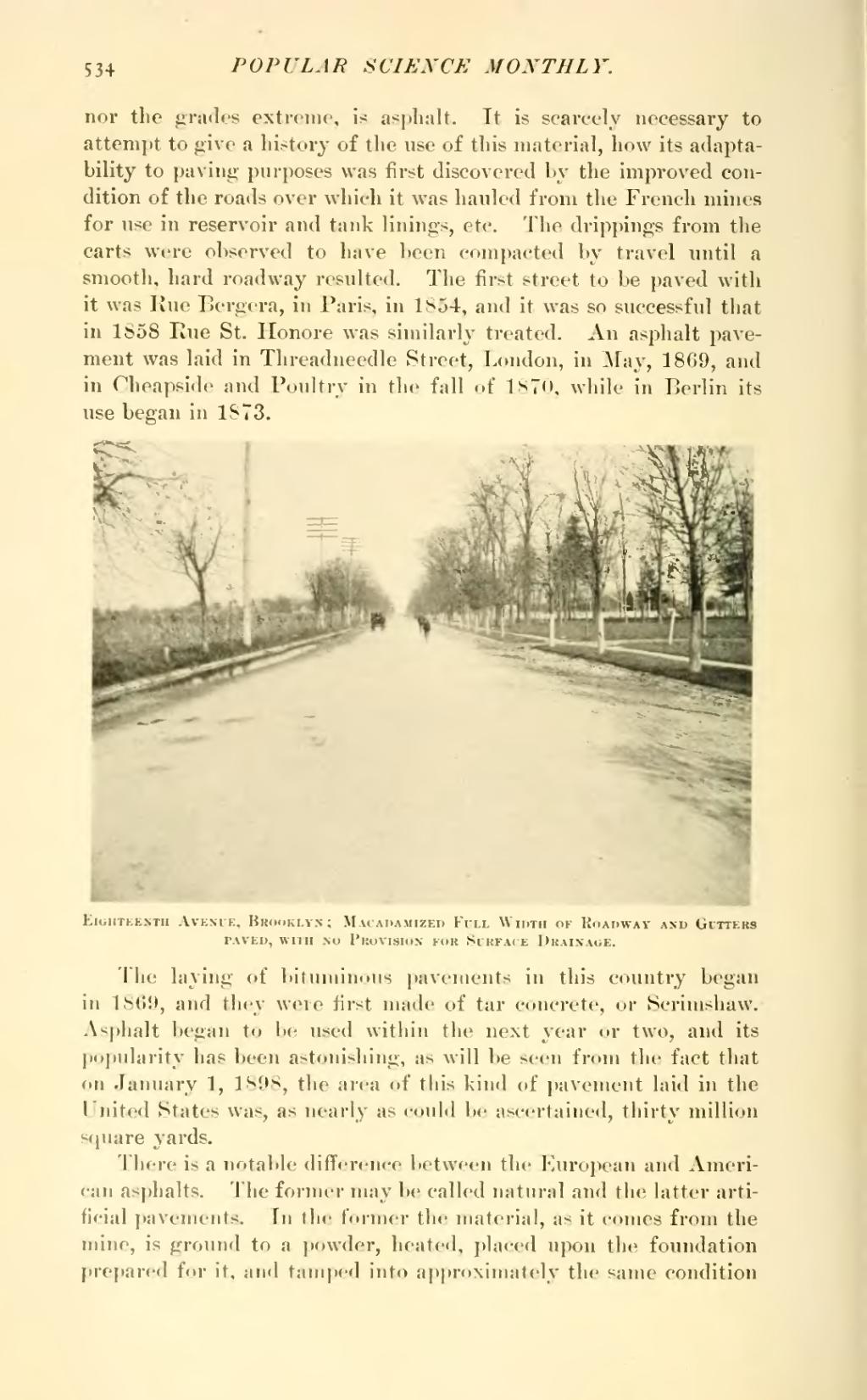nor the grades extreme, is asphalt. It is scarcely necessary to attempt to give a history of the use of this material, how its adaptability to paving-purposes was first discovered by the improved condition of the roads over which it was hauled from the French mines for use in reservoir and tank linings, etc. The drippings from the carts were observed to have been compacted by travel until a smooth, hard roadway resulted. The first street to be paved with it was Rue Bergera, in Paris, in 1854, and it was so successful that in 1858 Rue St. Honore was similarly treated. An asphalt pavement was laid in Threadneedle Street, London, in May, 1869, and in Cheapside and Poultry in the fall of 1870, while in Berlin its use began in 1873.

Eighteenth Avenue, Brooklyn; Macadamized Full Width of Roadway and Gutters paved with no Provision for Surface Drainage.
The laying of bituminous pavements in this country began in 1861), and they were first made of tar concrete, or Scrimshaw. Asphalt began to be used within the next year or two, and its popularity has been astonishing, as will be seen from the fact that on January 1, 1898, the area of this kind of pavement laid in the United States was, as nearly as could be ascertained, thirty million square yards.
There is a notable difference between the European and American asphalts. The former may be called natural and the latter artificial pavements. In the former the material, as it comes from the mine, is ground to a powder, heated, placed upon the foundation prepared for it, and tamped into approximately the same condition
